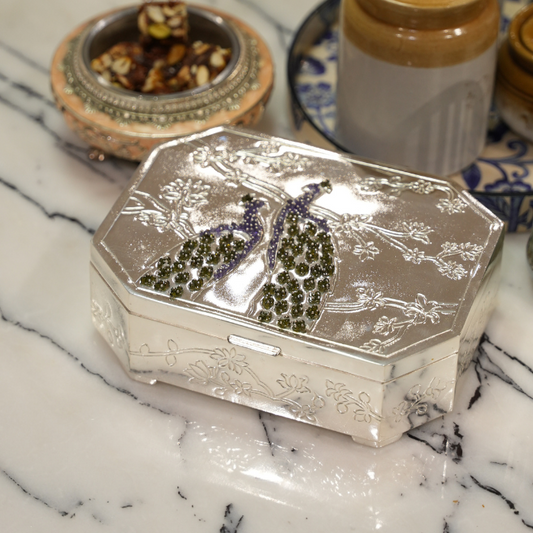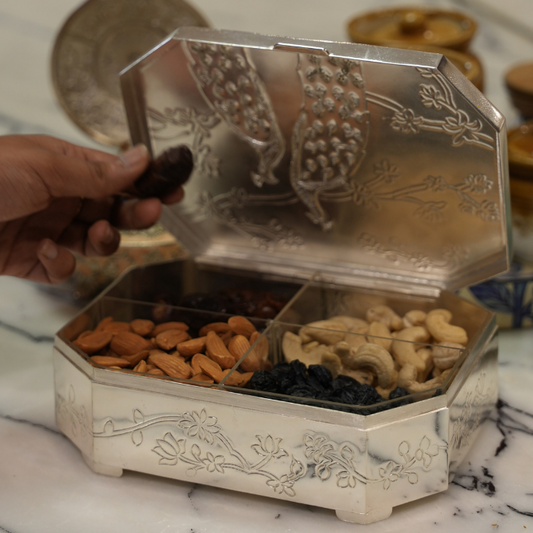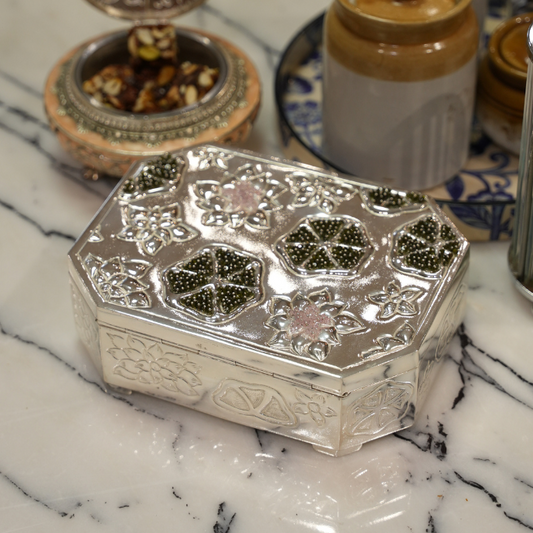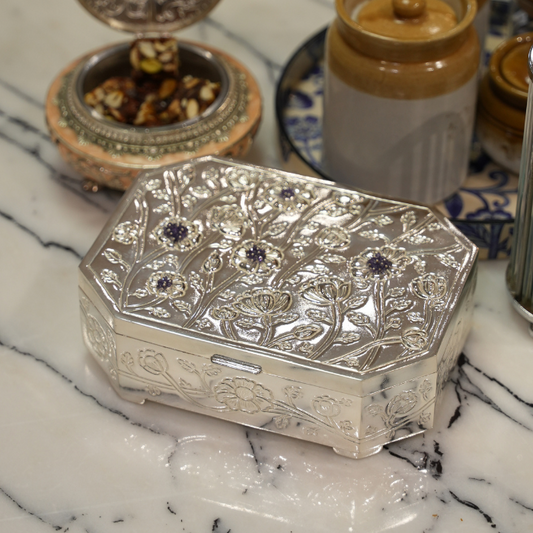Understanding silverware markings: Your Complete Guide to Identifying Hallmarks, Stamps, and More
Silverware often carries a story etched in its silverware markings, whether it’s antique flatware from centuries past or vintage silver markings on sterling heirlooms passed down through generations. These hallmarks on silverware are more than just decorative; they provide crucial information about authenticity, purity, and origin. In this guide, we'll help you unravel the mystery behind silver stamps on silverware, identifying different types of marks and what they reveal about your pieces.
Understanding Silverware Markings
What Are Silverware Markings?
The small symbols, letters, or numbers engraved onto your silver items are known as silverware markings. These silver stamps on silverware serve as indicators of material composition, authenticity, and even historical significance. Whether it’s sterling flatware markings or silverware hallmark identification, these stamps help distinguish between sterling silver and silver-plated items.
Types of Silverware Markings
-
Hallmarks on silverware: These official stamps certify silver purity and often comply with legal standards.
-
Maker’s marks: Identifiable symbols or initials of the silversmith or manufacturer.
-
Date letters: Commonly found on English silverware marks, these signify the year of production.
-
Assay marks: Indicate the office where silverware was tested and approved for purity.
Regional Silverware Markings and Hallmarking Systems
English Silverware Marks
The British hallmarking system is one of the oldest, regulated by the Goldsmiths' Company. Common English silverware marks include the Lion Passant, which denotes sterling silver purity, and the Leopard’s Head, a symbol for London assay offices. Each piece may also carry a date letter, which helps in silverware hallmark identification.
German Silverware Marks
In Germany, vintage silver hallmarks often feature a numeric stamp, such as "800," signifying 80% silver purity. Additional German silverware marks like the Crescent Moon and Crown help identify the country of origin and manufacturer.
Other International Hallmarks
French old silverware markings include the Minerva’s Head, a government certification for high-purity silver. In the United States, American silverware markings commonly feature "Sterling" or "925," indicating sterling silver.
Sterling Silver vs. Silver-Plated Markings
What Is Sterling Silver?
Genuine sterling silver contains 92.5% pure silver, often stamped with "925" or "Sterling." These silverware markings sterling ensure that your piece is of high value and durability.
How to Identify Silver-Plated Markings
Unlike sterling flatware markings, silver-plated items bear different antique silver markings like EPNS (Electro Plated Nickel Silver), "A1," or "Quadruple Plate." These silver stamps on silverware indicate that a thin layer of silver is bonded over a base metal.
Key Differences Between Sterling and Plated Silver
While sterling silver retains value and develops a natural patina over time, silver-plated items may tarnish more quickly and have lower resale value. Proper silverware hallmark identification can prevent confusion when assessing an item's worth.
Antique and Vintage Silver Markings
Identifying Antique Silver Markings
To date antique silverware, look for antique silverware markings such as detailed hand-engraved hallmarks, which were common before machine stamping. These antique silver stamps can reveal the silversmith's identity and production era.
Decoding Vintage Silver Hallmarks
Vintage silver markings vary by region and time period. A piece from the early 20th century may carry unique vintage silver hallmarks, while modern silverware might bear standardized purity stamps.
How to Identify and Research Silverware Markings
Tools and Resources for Hallmark Identification
A magnifying glass, reference books, and online hallmark databases can aid in silverware hallmark identification. Museum archives and collector guides also offer insights into rare antique silver markings.
Tips for Identifying Unknown Marks
Researching symbols, numbers, and letters in old silverware markings can help uncover their origins. Faded or worn sterling flatware hallmarks can still be deciphered using contrast-enhancing techniques.
The Value of Understanding Silverware Markings
Recognizing antique silver stamps can greatly influence an item’s value. Rare sterling flatware hallmarks and well-preserved hallmarks on silverware can indicate collectible, high-value pieces.
Maintaining and Caring for Marked Silverware
Cleaning and Polishing Silverware
When cleaning silverware, avoid harsh chemicals that could erode silver stamps on silverware. A soft cloth and mild cleaner can preserve antique silver markings while removing tarnish.
Proper Storage for Silverware
To maintain old silverware markings, store items in anti-tarnish cloths or airtight containers. Proper storage prevents oxidation, keeping sterling flatware markings intact for years.
Common Misconceptions About Silverware Markings
-
Myth: All items with silver stamps on silverware are pure silver.
Truth: Some are silver-plated, marked with EPNS or "Silverplate."
-
Myth: Faint or worn antique silver stamps indicate fake silver.
Truth: Genuine old silverware markings may fade due to age and frequent use.
Conclusion
Understanding silverware markings is key to identifying authenticity, origin, and value. By learning how to read hallmarks on silverware and researching antique silverware markings, you can make informed decisions about your silver pieces. Whether you're a collector or simply curious, these insights will help you appreciate the rich history behind your silverware.
Frequently Asked Questions
Q1: What do hallmarks on silverware mean?
Hallmarks on silverware indicate its purity, manufacturer, and sometimes the year of production.
Q2: How can I identify sterling flatware markings?
Look for "Sterling" or "925" stamps, which signify genuine sterling silver.
Q3: Are antique silver markings different from modern ones?
Yes, antique silverware markings often include more intricate symbols, maker's marks, and date letters.
Q4: Can I determine the value of silverware from its markings?
Yes, silverware hallmark identification helps assess an item's purity, age, and origin, all of which affect its value.
Q5: What’s the difference between sterling silver and silver-plated markings?
Sterling silver is marked with "925" or "Sterling," while silver-plated items may have stamps like EPNS or "Silverplate."







